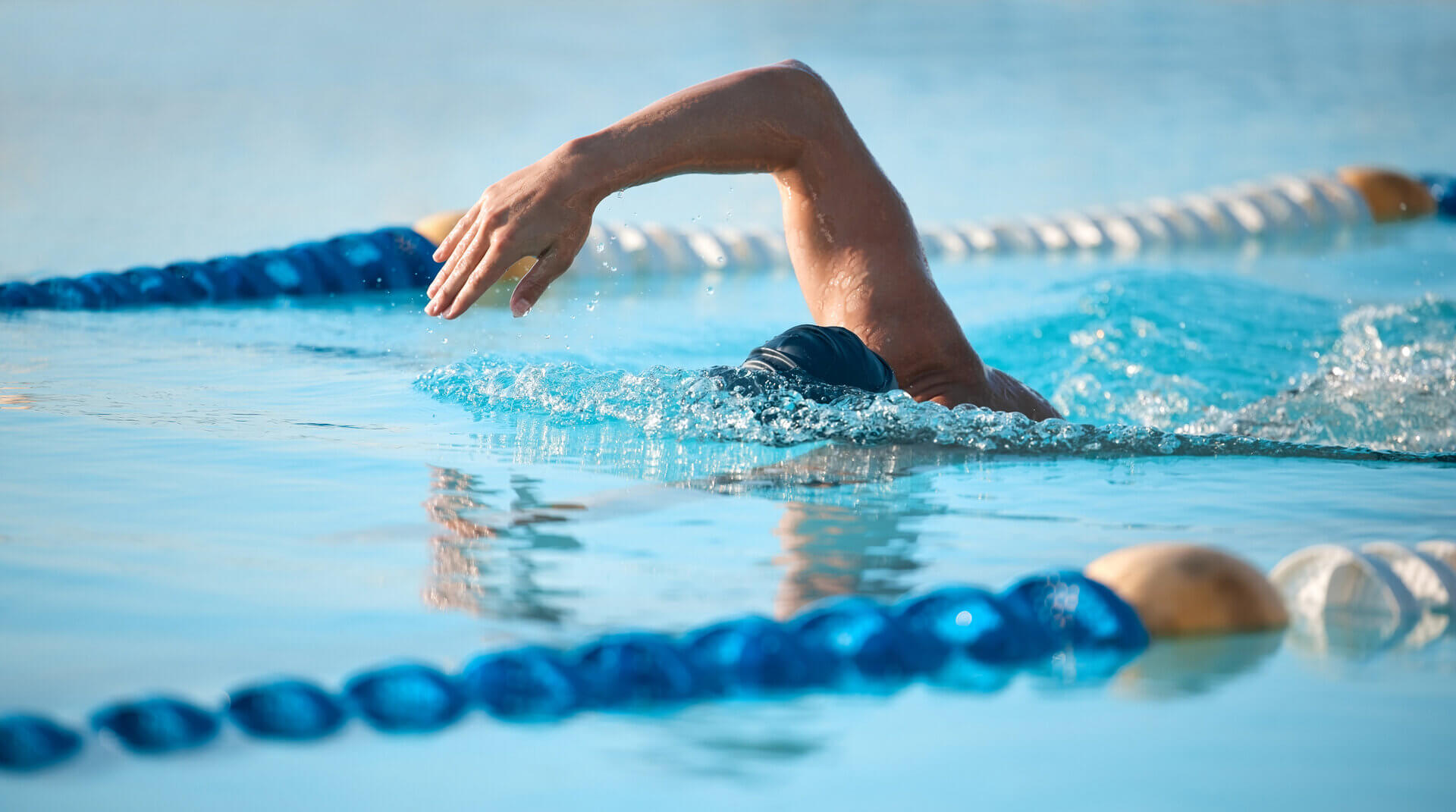It was the 2020 Olympics when record-holding Australian swimmer Ariarne Titmus started experiencing shoulder pain during the state championships.
It all started with a small, sharp twinge with the worry that it would be detrimental to her swimming career.
However, with great success she managed to recover and score a win for Australia in the 200m and 400m freestyle races.
Likewise to Ariarne, other famed Olympians such as Michael Phelps have reported issues with swimmer’s shoulder.
So what exactly is swimmer’s shoulder?
Swimmer’s shoulder is also known as subacromial impingement syndrome where the structures at the front of the shoulder are ‘pinched’ and become inflamed.
Symptoms include sharp, pinching pain at the front of the shoulder which particularly worsens with overhead movements or lying directly on the affected shoulder.
There may also be reduced shoulder range of movement such as difficulty reaching behind.
This pain generally worsens during activity.
Is it common?
You don’t have to be an elite swimmer to experience this; swimmer’s shoulder can affect up to 50 – 70% of seasonal swimmers.
It’s a huge range that can vary depending on age, level of competition, swim stroke and training volume.
Of the swimmers affected by this condition, around 35% will significantly struggle with training or progressing.
Why does this happen?
It’s no secret that immense arm power and endurance is required in competitive swimming.
The shoulder is the most mobile joint in the entire body and thus it relies on surrounding muscles for stability.
It is particularly vulnerable in swimming due to a mix of the shoulder moving at its extreme ranges and high repetition strokes.
An elite athlete will swim 60-80km/week which amounts to 30,000 strokes/arm.
Unsurprisingly, 80% of power in freestyle comes from arm strokes and the remaining is from kicking.
It is overuse or misuse from poor technique that will result in impingement.
Weakness, tightness and overload usually are all linked to one another.
These can also be contributing factors:
- Soft tissue/capsular tightness around the shoulder
- Weakness of the rotator cuffs or they don’t operate the way they should to stabilise the shoulder. This leads to an imbalance of muscles forces whereby lack of stability may lead to the tendon of the supraspinatus (one of the key rotator cuff muscles) being pinched.
These will put you at increased risk:
- A sudden increase in training volume
- Poor technique
- Excessive training (long hours and multiple consecutive days without rest)
- Reduced shoulder flexibility
Luckily, physiotherapy can assist with smooth recovery
There are many things we can do to ensure your recovery is successful so that you can return to the pool as soon as possible but in a safe manner.
We help with:
- Education on pain, inflammation and load management
- Hands on therapy for relief and improve movements
- Targeted exercises to increase stability of the shoulder; get the rotator cuff muscles firing properly again, stretches to reduce surrounding tightness of the shoulder capsule, postural correction
- Sport specific drills in later stages of rehab
- Assistance with setting up a dryland program to cover strength and endurance training of the shoulder muscles
Examples of great exercises
1. Sharapova banded raises
Inspired by renowned professional tennis player Maria Sharapova, this is a great exercise to target the strength and functional role of the rotator cuffs to work together to stabilise the shoulder.
2. ATWs
This exercise targets the scapular muscles; challenging its ability to hold the scapula in an optimal position which is crucial for the shoulder.
Good scapular control is key to managing swimmer’s shoulder.
3. Doorway stretch
This is a great stretch that targets the front of the shoulder.
As mentioned, one of the contributing factors to this injury is tightness.


